
Late-night study sessions with a stack of problem sets, looming deadlines, and tricky proofs are a familiar scene for college students. Can AI solve math problems? is the question that comes up when you need faster answers, clear step-by-step solutions, and fewer mistakes. This article compares AI math solver tools, shows how machine learning and symbolic computation work in practice, and explains how automated problem solving can save you time, deepen your understanding, and boost your confidence on homework and exams.
To help you find a reliable option, HyperWrite's AI writing assistant offers clear, step-by-step explanations, fast equation-solving, and error-checking. Hence, you get accurate results as you learn along the way.
Summary
- AI is already a practical problem-solving partner for math, achieving about 90% accuracy on high school-level problems in recent benchmarks.
- Modern systems span arithmetic through calculus and linear algebra, and recent tests show they can solve roughly 75% of undergraduate-level math problems.
- AI excels at brute-force search and pattern recognition, enabling multiple candidate solution paths and faster workflows, with reports that AI tools can solve complex math problems about 50% faster than traditional methods.
- That 75% undergraduate success rate implies a 25% gap where systems may hallucinate plausible but incorrect steps or miss the conceptual pivot that makes a proof elegant, so human verification remains essential.
- The ecosystem is crowded, with 15 AI math platforms compared in the article. While over 70% of students report improved grades after using AI tools, scattered outputs can fragment learning and make it harder to reproduce reasoning under exam conditions.
- Best practice is a mixed workflow that uses AI to automate algebraic drudgery and compress drafting and verification from days to hours, while reserving human effort for conceptual design, intuition, and formal checking.
This is where HyperWrite's AI writing assistant fits in; it addresses fragmented study workflows by centralizing editable, citation-backed step-by-step solutions and notes for teams.
Can AI Solve Math Problems & How Accurate Is It?

AI is already a practical problem-solving partner for math, not a futuristic promise. It:
- Reads expressions
- Translates them into symbolic form
- Runs algebraic or numerical routines
- Can produce step-by-step explanations that you can follow and check.
These systems are reshaping how students and researchers attack homework, proofs, and data-heavy exploration.
How Does AI Actually Read And Reason About Equations?
AI combines natural language processing with symbolic math engines and pattern-learning.
- An NLP layer turns a typed or spoken question into a structured representation.
- A symbolic component or math kernel performs algebra, calculus, or matrix manipulation, while machine learning models propose strategies and checkpoints.
That layered workflow is why you get both a working answer and an explanation you can audit, rather than a single black-box output.
What Kinds Of Math Can Modern Systems Handle?
They cover basic:
- Arithmetic
- Algebraic manipulation
- Calculus
- Linear algebra
- Optimization
- Probability
- Applied statistics
Recent benchmarks are striking: MIT Technology Review reported in 2025 that AI models achieved 90% accuracy in solving high school-level math problems.
Progress has also climbed into higher education, with the said review noting in 2025 that the latest AI system can solve 75% of undergraduate-level math problems. Put simply, routine symbolic work and many proof steps are now mechanizable.
What Does AI Do Best, And Why Does That Matter?
AI excels at brute-force search, pattern recognition, and scaling computations to sizes people cannot comfortably hold in their heads. As Michael Douglas put it, “Computers can deal with data sets that are too large for people to search through, and they can find patterns that people find interesting and significant.”
That means tedious algebra, exhaustive case checks, and numeric experiments are no longer roadblocks. Use AI to generate multiple candidate paths through a problem, then pick the ones that make conceptual sense.
Where Does AI Still Falter?
Pattern-based strength is also a weakness. Systems often miss the conceptual pivot that makes a proof elegant, and they can hallucinate plausible but incorrect steps when you push beyond routine structure or into deep abstraction.
This gap appears consistently whenever a problem requires:
- Nonlinear intuition
- Novel constructions
- Variable-driven reasoning
It is exhausting when you spend hours wrestling with a proof and the machine proposes steps that feel right but are logically shaky; that frustration is why human judgment still matters.
How Should Teachers And Students Change What They Do Now?
Most students study by redoing textbook exercises and handing in neat solutions because this method is familiar and straightforward. That works until assessments and research demand original thinking and verification under realistic conditions, at which point the old routine fragments into suspicion and busywork.
Platforms like HyperWrite provide context-aware, citation-backed assistance that can generate step-by-step solutions, attach references from scholarly sources in real time, and keep everything in one editable document, helping teams compress drafting and verification from days to hours while preserving traceable reasoning.
What About Formal Verification And Automated Proofs?
Mixed approaches win here. Generative models can draft human-style proofs, and proof assistants can formally verify them. The productive pattern is to have the model propose a structured proof, then run that structure through a verifier that either accepts it or pinpoints exact logical gaps.
Melanie Weber captured the efficiency idea well when she said, “Artificial intelligence is already revolutionizing science. The current models require vast data and computing resources, which can be limited in the sciences and raise sustainability concerns.” Encoding problem-specific structures, such as geometric symmetries, narrows the search space and reduces resource requirements, thereby making automated theorem-proving steps more reliable.
What Should You Take Away, And How Do You Use AI Responsibly?
Treat AI as a productivity partner, not a replacement. When we apply AI to study workflows, a clear pattern emerges: use it to automate algebraic drudgery, explore multiple candidate strategies quickly, and generate citation-backed notes you can edit and verify.
Reserve human effort for conceptual design, intuition, and the creative parts of proofs. That division keeps learning honestly and researching credibly. This is not the end of the story; it is the hinge point.
Related Reading
- When Is the Best Time to Study for a Test
- What Is the Hardest Thing to Study in College
- How to Study in Med School
- Types of Study Methods
- How Long Should You Study for a Test
- How to Study for a Math Test
- Study Tips for High School
- Study Tips for Middle School
- Study Strategies for High School Students
Top 15 AI Math Tools to Solve Complex Math Problems
If you want a practical toolkit for homework, studying, or quick technical checks, I put together 15 AI tools you can reach for right now, with what each one does best and who benefits most. You should also notice how many of these prioritize stepwise explanations and input flexibility, not just final answers, which matters when you need to learn, not just verify.
1. HyperWrite

HyperWrite pairs state-of-the-art AI with deep personalization so your writing and explanations sound like you at your best.
Key Features
- Instant email and essay drafts
- In-line sentence rewrites
- Integrated document editor
- Citation-backed content via research connectors
Ideal Users
- Students writing math explanations
- Researchers documenting solutions
- Professionals drafting technical notes
2. Powerdrill's AI Math Tool
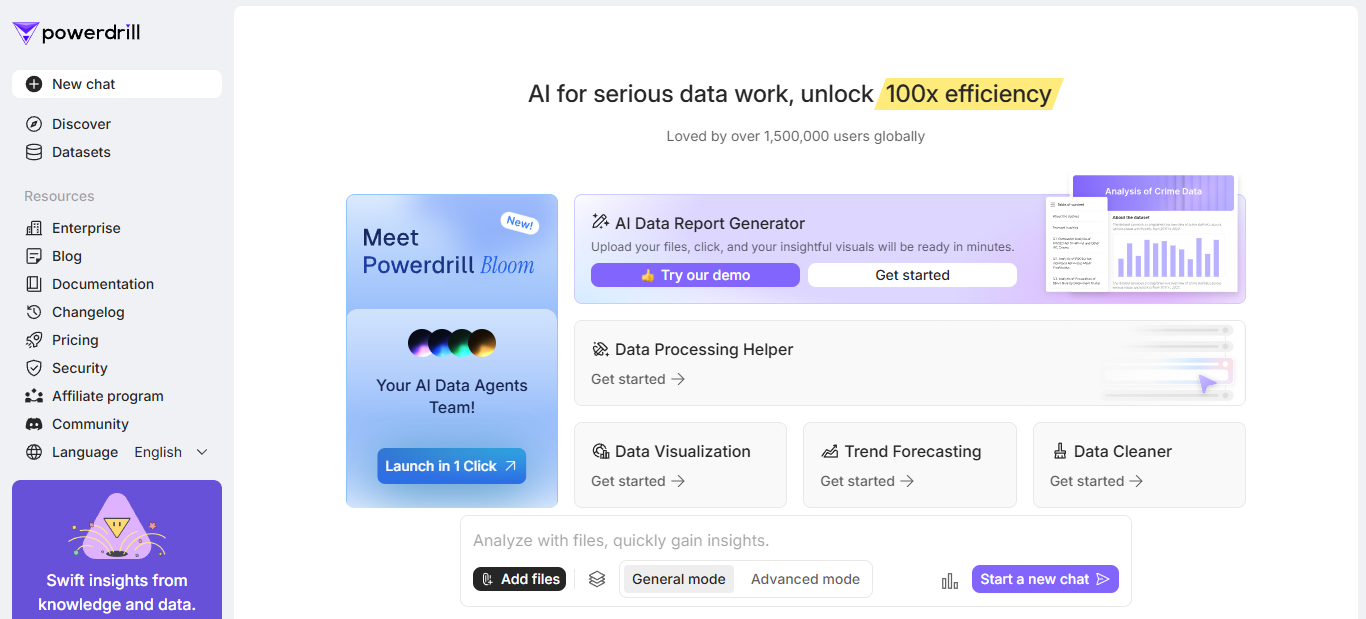
A hybrid math and data-analysis assistant that reads problems from photos and runs forecasting or algebraic routines.
Key Features
- Photo capture to symbolic conversion
- Step-by-step solution breakdowns
- Time series and predictive analytics modules
Ideal Users
- Students needing quick homework help
- Data analysts who switch between math and forecasting
3. Edubrain

A free STEM-focused tutor that unpacks problems across math, physics, and chemistry with clear logic.
Key Features
- Photo input
- Natural language parsing
- Structured step-by-step solutions
- Flashcard and notes export
Ideal Users
High school and undergraduate students across STEM disciplines.
4. Getsolved.ai
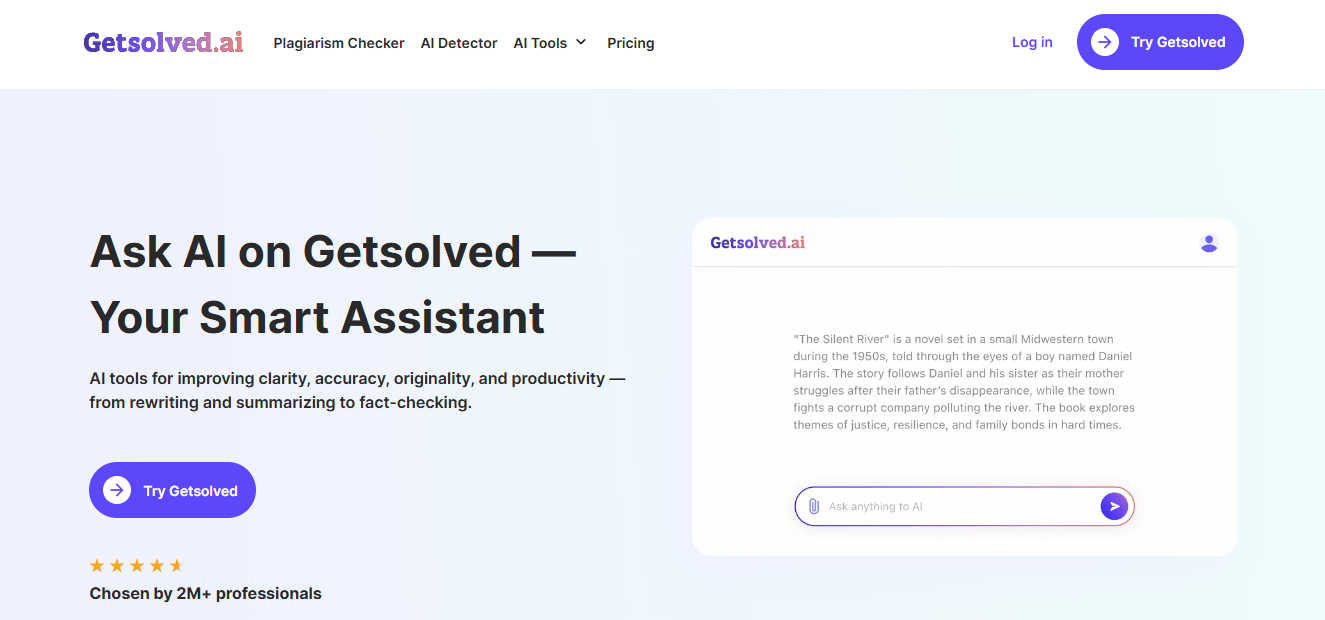
A fast online solver designed to simplify multi-step reasoning into approachable steps and visuals.
Key Features
- Error detection
- Visual solution diagrams
- Adaptive explanations that match user style
Ideal Users
- Students working through problem sets
- Study groups that want consistent walkthroughs
5. Mathway

A widely used quick-solve engine that covers algebra through calculus with instant answers and optional steps.
Key Features
- Broad topic coverage
- Immediate answers
- Readable step-by-step explanations (subscription unlocks complete steps)
Ideal Users
High school and early-college students who need fast verification and practice.
6. SageMath

An open-source environment for symbolic and numeric computation suited for serious modeling and proofs.
Key Features
- Symbolic algebra
- Numerical solvers
- Scriptable notebooks
- Rich library integrations
Ideal Users
- Researchers
- Engineers
- Advanced undergraduates doing reproducible computation
7. Symbolab

A dedicated solver that breaks formulas and integrals into educational steps with helpful hints.
Key Features
- Formula parsing
- Step-by-step breakdowns
- Formula reference explanations
Ideal Users
Learners who want to see the algebraic logic behind each manipulation.
8. Julius.ai
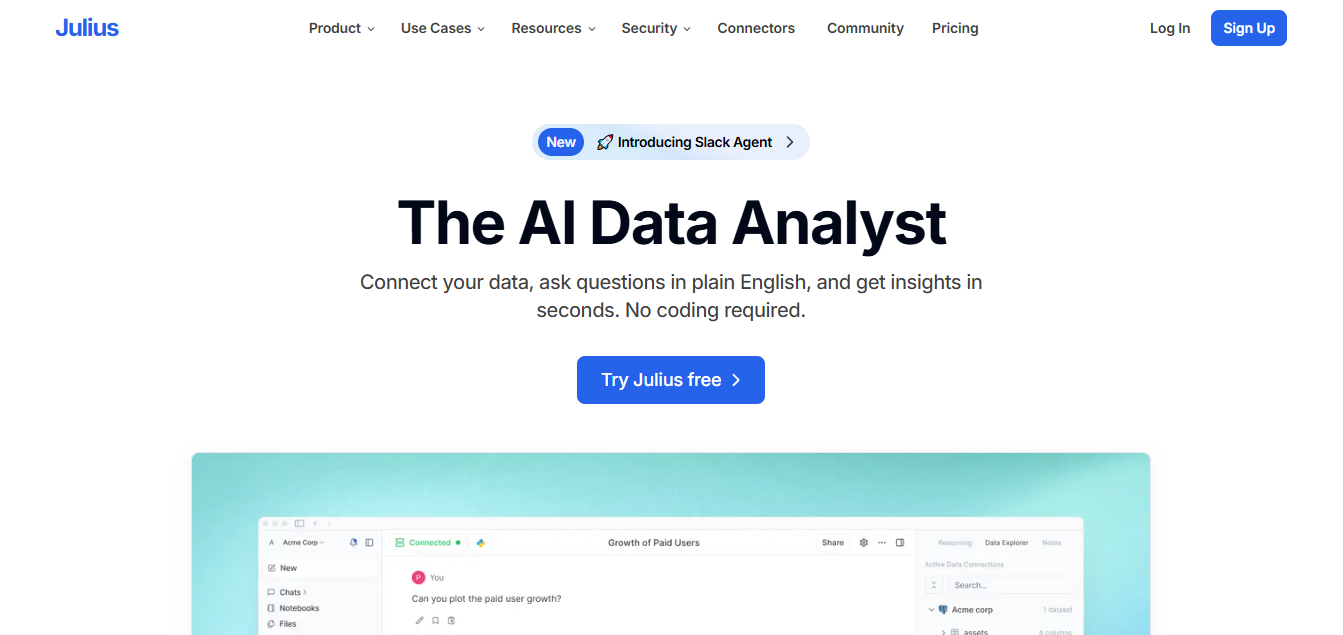
Natural-language-first solver that accepts plain English problem statements and returns worked solutions.
Key Features
- Conversational input
- Explanation scaffolding
- Multi-step reasoning clarity
Ideal Users
- Students intimidated by formal notation
- Tutors who want to explain concepts in words
9. HIX Tutor
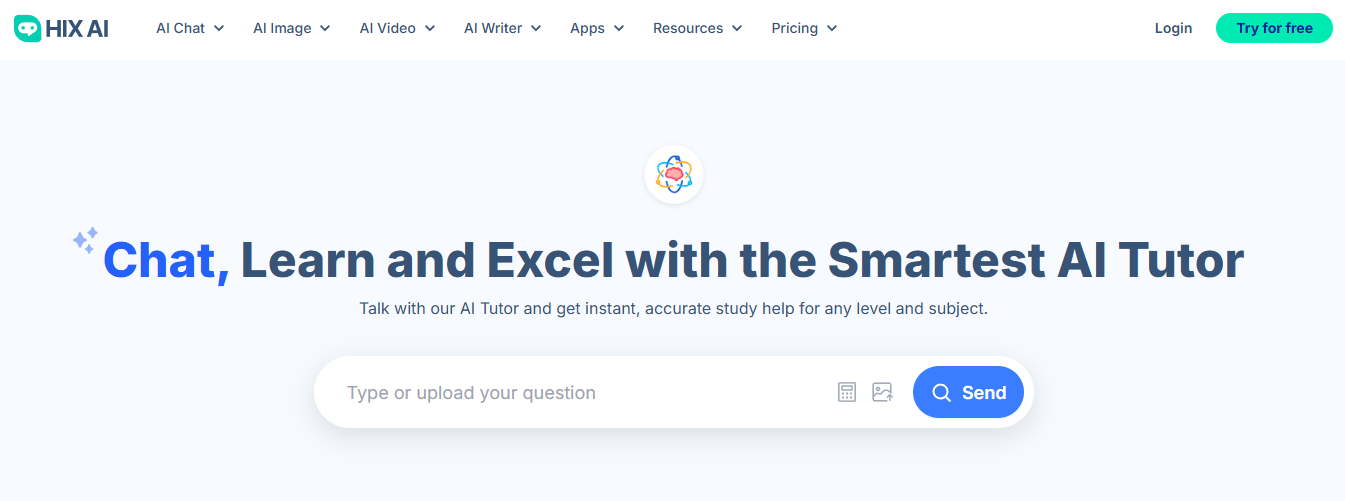
An image-aware math assistant that provides complete calculations from uploaded pages or photos with high claimed accuracy.
Key Features
- Document and image upload
- End-to-end solution steps
- Focus on homework-level problems
Ideal Users
Students with photographed assignments and tutors needing quick worked examples.
10. HomeworkAI
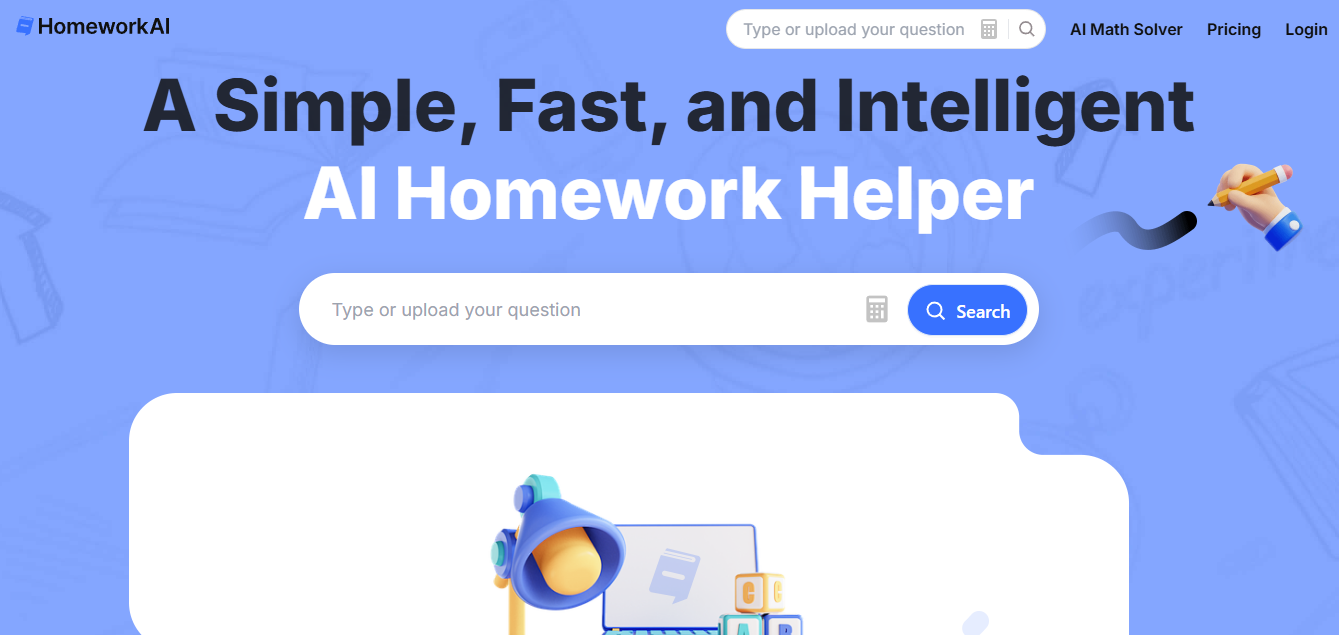
A generalist homework helper that supports multiple subjects with round-the-clock availability.
Key Features
- Multiple input modes
- Cross-subject assistance
- Stepwise math explanations
Ideal Users
Busy students needing late-night help and exam prep.
11. Question AI

An all-in-one homework product promising broad coverage and multilingual support, designed for verification and practice.
Key Features
- Broad topic handling
- Language support
- Quick checks against standard curricula
Ideal Users
International students and those preparing for standardized tests.
12. QuickMath

A web tool that automates everyday algebraic and calculus operations and offers graphing and factoring tools.
Key Features
- Equation solving
- Symbolic simplification
- Graph plotting
- Mobile apps
Ideal Users
High school and college students need hands-on calculation tools.
13. Smodin Math AI Homework Solver
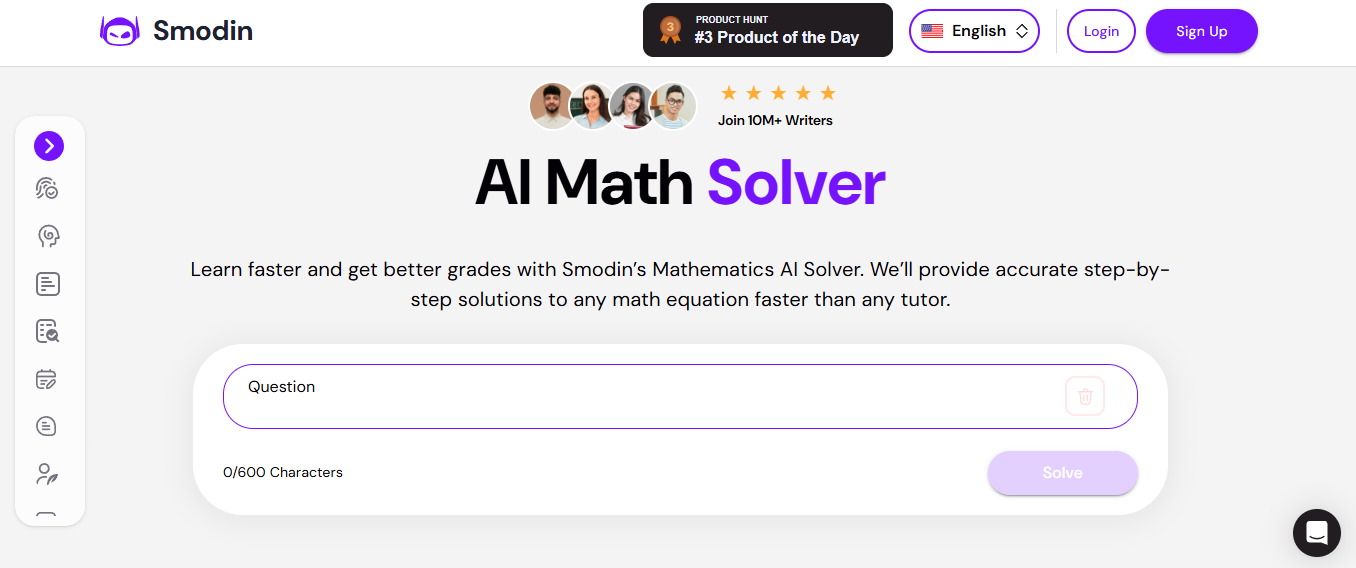
A straightforward, fast solver aimed at exam prep with a minimalist interface and daily free credits.
Key Features
- Simple problem entry
- In-depth answer generation
- Daily free usage caps
Ideal Users
Students studying for tests who need quick rehearsal questions.
14. StudyMonkey

A personalized homework assistant that preserves a history of past questions and lets users tune output by grade level.
Key Features
- Personalization
- Question history
- Tiered access to advanced models
Ideal Users
Recurring users who want tailored explanations and progress tracking.
15. SnapXam

A camera-first math tutor that returns solutions and links to short tutorial videos for common topics.
Key Features
- Smartphone photo input
- Multiple solving methods
- Curated video explanations
Ideal Users
Learners who prefer visual walkthroughs and mobile-first study.
The Exam Gap: Reproducing Reasoning Under Pressure
Most students start with a handful of these tools because they feel familiar and fast, which works when problems are routine.
The hidden cost appears when complexity grows, or during timed exams, because scattered answers without consistent citation and editable notes fragment learning and make it hard to reproduce reasoning under pressure.
Centralized Learning: Preserving the Team's Thought Process and Citation Trail
Teams and study groups find that platforms like HyperWrite centralize explanation drafts, citation trails, and editable solution notes, reducing context-switching and preserving the learning thread as problems scale.
I also note practical gains in efficiency, as Overchat AI (2025) states, “AI tools can solve complex math problems 50% faster than traditional methods,” freeing time to focus on understanding rather than arithmetic.
The ‘Finished Map’ Problem: Final Answers vs. Stepwise, Editable Learning
This pattern appears across exam prep and group projects: tools that stop at final answers leave learners blank when they must recreate the work, while stepwise, editable outputs let students practice reconstruction until the method becomes second nature.
Think of it as the difference between being handed a finished map and learning to read the terrain yourself; one gets you there once, the other teaches you to navigate.
Want to see how these tools change what you can actually turn in, explain, and defend tomorrow?
Related Reading
- How to Study the Night Before an Exam
- Different Study Techniques
- How to Study for a Final Exam
- How Many Hours Do College Students Study per Week
- How to Create a Study Schedule
- Study Habits for High School
- Good Study Habits for College
- How to Study for Finals in High School
- Scientifically Proven Study Methods
Try our AI Writing Assistant to Write Natural-sounding Content
We know how tight deadlines and tangled notes make studying feel impossible, so consider HyperWrite to turn rough ideas into clean, citation-backed drafts that still sound like you.
Industry findings like the User Feedback Survey (2023), which found that 85% of users reported improved content quality, and Rytr (2023), which generates content 10x faster, show you can get higher-quality drafts far quicker. The pattern across study workflows is clear: use AI to draft and cite, while applying human oversight to keep the reasoning honest.
Related Reading
- Best AI for Exams
- Best Light Color for Studying
- AI Activities for High School Students
- Best AI Websites for Students
- Best Way to Study for a Test
- Best Study Tools for College Students
- Best AI to Solve Math Problems
- Best Study Apps for College Students
- Best Study Methods

Powerful writing in seconds
Improve your existing writing or create high-quality content in seconds. From catchy headlines to persuasive emails, our tools are tailored to your unique needs.

